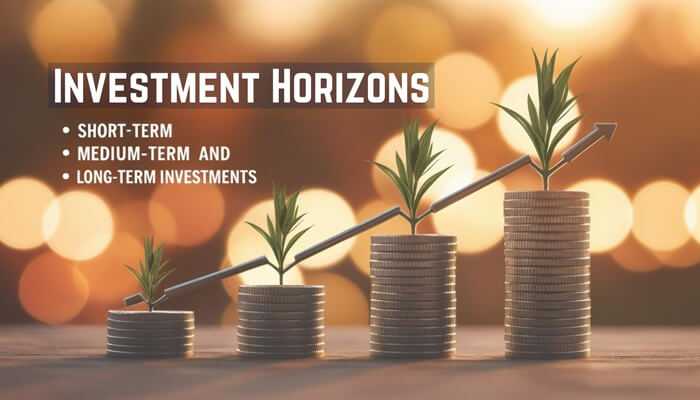“The stock market is designed to transfer money from the Active to the Patient.” – Warren Buffett. Have you ever wondered how long you should hold onto an investment? Whether you’re aiming for quick gains or long-term wealth, understanding investment horizons is crucial. Navigating the complexities of investment durations becomes more manageable with guidance from seasoned experts. Visit https://opulatrix-app.com/ it serves as a bridge, connecting traders with educational professionals who offer valuable insights into strategic decision-making. In this article, we’ll break down short-, medium-, and long-term investments to help you align your strategy with your financial goals. Let’s dive in!
Understanding Investment Time Horizons
What Is an Investment Time Horizon?
An investment time horizon represents the length of time an investor plans to hold onto their investments before needing to access the funds. This timeline plays a fundamental role in shaping investment strategies and determining appropriate asset allocation. Whether saving for retirement decades away or planning for a home purchase in the next few years, the investment horizon influences every aspect of the investment decision-making process.
The Three Main Types of Investment Horizons
Short-Term Investment Horizons (Under 3 Years)
Short-term investments typically span from a few months to three years. These horizons suit investors saving for near-term goals like purchasing a car, planning a wedding, or building an emergency fund. Short-term investments usually prioritize capital preservation over growth, focusing on more stable, liquid assets that can be easily converted to cash when needed.
Medium-Term Investment Horizons (3-10 Years)
Medium-term horizons bridge the gap between immediate needs and long-term wealth building. This timeframe often applies to goals like saving for a house down payment, funding a child’s education, or starting a business. These investments can incorporate a mix of growth and stability, allowing for moderate risk-taking while maintaining some security.
Long-Term Investment Horizons (Over 10 Years)
Long-term investments extend beyond ten years and are most commonly associated with retirement planning or generational wealth transfer. This extended timeline allows investors to weather market volatility and potentially benefit from compound growth, making it possible to take on higher levels of risk in pursuit of greater returns.
Factors Influencing Your Investment Horizons
Age and Life Stage
An investor’s age and life stage significantly impact their investment horizon. Younger investors typically have longer horizons, allowing them to take on more risk and potentially recover from market downturns. As investors age, their horizons often shorten, necessitating a more conservative approach to protect accumulated wealth.
Financial Goals
Different financial objectives require different time horizons. Retirement planning demands a long-term perspective, while saving for a vacation might only need a short-term strategy. Clear goal-setting helps determine the appropriate investment period and guides asset allocation decisions.
Risk Tolerance
Risk tolerance and investment horizons are closely interconnected. Longer horizons generally allow for higher risk tolerance, as time can help smooth out market volatility. Conversely, shorter horizons usually require lower risk tolerance to protect capital for approaching needs.
Matching Investment Strategies to Time Horizons
Short-Term Strategy
Short-term investment strategies typically focus on capital preservation and liquidity. Suitable investments might include high-yield savings accounts, money market funds, or short-term bonds. While returns may be modest, the primary goal is protecting principal while maintaining easy access to funds.
Medium-Term Strategy
Medium-term strategies often employ a balanced approach, combining growth potential with reasonable stability. This might include a mix of bonds, dividend-paying stocks, and growth investments. The goal is to achieve moderate returns while managing risk through diversification.
Long-Term Strategy
Long-term strategies can afford to be more aggressive, focusing on growth potential over immediate stability. These portfolios might heavily weight toward stocks and other growth investments, potentially including alternative investments like real estate or private equity. The extended timeline allows investors to ride out market fluctuations and potentially benefit from higher returns.
Common Mistakes in Managing Investment Horizons
Mismatching Horizons and Investments
One frequent error investor make is choosing investments that don’t align with their time horizon. For example, investing short-term savings in volatile stocks or placing long-term retirement funds in low-yielding savings accounts can lead to suboptimal outcomes.
Changing Strategy Too Frequently
Another mistake is frequently changing investment strategies based on market conditions or emotions. Successful investing typically requires staying committed to a well-thought-out plan aligned with the chosen time horizon.
Ignoring Regular Review and Rebalancing
While maintaining a consistent strategy is important, regular portfolio review and rebalancing ensure investments remain aligned with the intended time horizon and risk tolerance as circumstances change.
The Role of Market Timing in Investment Horizons
Why Market Timing Often Fails
Attempting to time the market by moving in and out based on predicted market movements often leads to reduced returns. Instead, focusing on appropriate time horizons and maintaining a consistent strategy typically produces better results.
Conclusion
Investment success isn’t just about picking the right assets—it’s about knowing how long to hold them. Whether you’re in for the short-term thrill or the long-term stability, your investment horizon should match your risk tolerance and financial objectives. By staying informed and patient, you can navigate market fluctuations and maximize returns. So, how long will you stay invested? The answer could shape your financial future!



